Entries from August 2009
 Picture: Names of ships, sailing ports, number of slaves on board and place of arrival; from Docklands Museum
Picture: Names of ships, sailing ports, number of slaves on board and place of arrival; from Docklands Museum
A short clip at the Docklands Museum opened up with the question: “Who are you?” It asked us to think about the feeling of being taken to a foreign place against your will to be violated, beaten, mistreated and even sold. It asked us to think about loosing everything you have ever worked for, everything you own, everything and everyone you love. The film also asked us to “consider slavery how bitter a draught and how many are forced to drink it” (from short film). I have thought about these questions multiple times before and I will never know what it was like to be in one of the 10,000 ships (as a slave) which left Britain for the Triangle Trade between 1642 and 1812.
Since my arrival in London, I have inquired about London’s dark history, the unpopular history, the history that no one wants to discuss, exactly the history on display at the Docklands. Yesterday, while at the Museum of London, as I read through a small exhibit on Apartheid I was reminded of the atrocities committed in South Africa and today I was reminded once again. Although, the small exhibit appeared to be focused on the contributions of Englishmen and women to the fight against the Apartheid government, it sparked a special interest in me. Today at the Docklands Museum, I was able to answer some of my own questions from yesterday regarding London’s role in the enforcement of segregation and the slave trade.
“The white men’s happiness cannot be purchased by the black men’s misery.” (Frederick Douglas, 1849) Indeed, Frederick Douglas was and still is correct in this statement and I think the Docklands Museum makes a great attempt to teach everyone just that. I am pleased to have learned this side of London’s history, the one A.N. Wilson would refer to as “hidden beneath the surface,” the one that Bloomsbury tells nothing of.
On our admirable tour of Bloomsbury I realized that this is a town filled with its own rich history, yet it is a history I was not too eager to learn. Even though, during the tour I was very much intrigued by the numerous Squares we visited and by the historical sites we discussed It was not my favorite place at the moment. I guess I’m not used to living and learning about a place where so many popular writers and influential people have lived in. I thought about how wealthy this area is and has been, and wealth is not something I personally admire. Regardless of my personal feelings, the town was a joy to explore and nifty to get to know, nevertheless I am almost sure there is some lost history in Bloomsbury too!
In class today Professor Qualls asked us to walk away considering the following questions: What does London do to people? and What happens when you come to London? Well, London certainly may have done something to those who sailed from the docklands towards the United States on slave ships, to the slaves themselves, to the people who fought (in London) for the end of Apartheid in South Africa and to those who were inspired and wrote their best work on the streets of Bloomsbury. London is making me questions British History, what is told as well as what remains hidden (not in our books). Now ask yourself, Who are you? and What is London doing to you?
I end with a quote from the Docklands Museum by Ottobah Cugoano (1787): “It is not strange to think, that they who ought to be considered as the most learned and civilized people in the world, that they should carry on a traffic of the most barbarous cruelty and injustice, and that many… are become so dissolute as to think slavery, robbery and murder no crime?”
Tags: Flow · Uncategorized
Today we took a walking tour of Bloomsbury. Before beginning I had no idea what to expect; I truly did not realize the amount of history that is so close to the Arran House. The amount of famous people who lived or worked in Bloomsbury is impressive. Whether it was John Maynard Keynes, Bertrand Russell, George Orwell or Virginia Woolf, you can’t but be impressed. I found it especially eerie that the Senate House of the University of London where Orwell worked and learned the in’s and out’s of propaganda really did give the the feeling of the “Ministry of Truth.” In the end, it is amazing to think that where you just walked could have been the same place as where one of the aforementioned individuals did so as well.
Perhaps what most interested me was the evolution of the Squares and the Square Gardens. What once was an exclusive membership reserved for only those in a particular Square now is open to everyone. It is obvious the class plays an important role throughout British history, but it fascinating to see how the dynamics of class change. I was particularly struck by a statue of Gandhi. The statue seems out of place yet shows how the British deal with their feelings about their past. Even with this, the statue was transformed into a symbol of peace and non-violence when the 7/7 attacks occurred. People gathered to mourn the attacks and lay flowers around a figure who was at one time seen as an enemy of British power. The transformation from enemy to symbol of peace and non-violence is remarkable.
Tags: Andrew F
Being an individual who thrives on organization and cohesiveness I have been very pleased with how everything in this course is beginning to connect. On Sunday I was part of the Docklands group that went through the museum and saw the African slavery/triangle trade exhibit. Viewing the exhibit was a very moving and captivating experience and I was very pleased to see it brought up today as part of our discussion. We have been given ample opportunities to take what we have seen on our adventures outside the classroom these past few days and bring them into our formal class discussions and today we took advantage of that opportunity. In my perfect world this is what all learning should be like. From learning through each others blog posts/thoughts in class we will not understand everything about London but we will get a greater understanding of London than if we were all charged to study everything about the place. Receiving information in small concentrated doses has been a great way for me to really focus on one subject at a time and absorb that material. I hope that continues.
On a completely different note, Aidan, Brandon and I went on a wonderful walk around the Thames on Saturday night. We took the Underground from Goodge street to Embankment and walked around that area for a bit. During our stroll we saw a lot of people dressed up in eclectic garb, singing, dancing and gyrating. One of the most entertaining moments of the night was when a group of five women dressed in matching skimpy maid outfits climbed on a boat and headed down the river. Four of the women were in their 20’s and one was about 60. One thing i’ve noticed here is that People here don’t seem to care much about age differences when it comes to social life. In the five days i’ve been here I’ve seen people from vastly different generations laughing together at pubs, sharing personal stories in a park and walking hand in hand. Regardless of their age everyone seemed excited about the weekend and the prospects of a good Saturday night. The streets were packed and it was hard to move more than five feet without bumping into someone. Overall we sensed embankment to be a fairly touristy area with many American style/fast food restaurants lining the streets.
After our walk uptown we headed down to the waterfront where we made our way across the Thames by way of the Hungerford bridge. While walking over the bridge we got some fantastic pictures of the London Eye. When we finally reached the other side of the bridge we took some time to observe the variety of buskers/street performers lining the streets. While observing a jam band I was nearly “roundhouse kicked” in the face by a man who was either very intoxicated or was missing a few marbles. At this point I decided that I had heard enough of the jam band and moved on to observe a magician locking himself in a suitcase and a man break-dancing with a bicycle helmet on. Both were very talented and entertaining. I like that London requires these buskers to receive licenses in order to display their acts. This ensures that only the cream of the crop are given the chance to perform . From my own brief busking experience back in high school I know all too well that not every busker is worthy of the limelight.
After hanging around County Hall for a while we decided to head back across the Thames. We completed the loop and took Westminster Bridge back just as the sun was setting, snapping some fantastic photos of Parliament, Big Ben, County Hall and the London Eye. After walking back to Embankment We got back on the Northern Line and headed to Leicester square where we decided to grab dinner at “The Spaghetti House”. Despite the overall quality of the food we decided we would probably not go back again. The reasoning behind this decision was twofold. The first reason was the food was a bit too expensive for its quality and the second was we had two waitresses taking care of us. The latter may sound like a good thing but neither waitress knew that the other one had us covered. This simply created confusion and left us with multiple bills at the end of the night.
From this walk I took a couple things that will stick with me. I became better oriented with the waterfront and the monuments that are set around it. I also learned about both the Westminster and Hungerford Bridge and would love to learn more about the history of bridges over the Thames. Another thing that stuck with me was the vibrant personalities I experienced during our walk. Between the street performers, the eclectic characters we saw in the streets and the man that almost knocked me out with his shoe I quickly learned that London has such a variety of personalities and life experiences to offer. There is an amazing cast of characters that lives within this city. We have now become a part of that cast as well. The million dollar question is where exactly do we fit into London’s present plot both as Americans, as young people and as students? This is something I will continue to explore during the rest of my time here.
Tags: Henry · Museums
…it’ll take you to the most unexpected places. These past two days have been extremely informative and exciting; provocative and shocking; and most of all, eyeopening. This past Sunday, as we all gathered together to take a trip back in time to the founding of Londinium, I found myself thinking about the people who walked this same land thousands of years ago. We tend to think about the older civilizations as fairly one dimensional; as a group of warriors that fight to defend their land. In fact, most of the history classes that I have taken really emphasize the importance of ancient battles, using them as markers in the timeline of the civilization’s evolution. But really, this only leaves us gaps in our knowledge, just like the gaps in the timeline. I guess ultimately, I find myself feeling unfulfilled by this sort of approach to history. What about the people, what about their fears and hopes, what about their humanity? These questions have always run through my head throughout my various history classes, yet since I have been in London, I have been pleasently surprised thus far.
We have walked the streets, learning and interacting with the history that surrounds us. I have really enjoyed seeing where influencial people have lived, walking the street where the Great Fire started…essentially being able to visualize life, to compare it to my own, to recognize their hardships and their successes.
This was especially evident on Sunday when my group headed to the Docklands to visit the museum. We were all stunned into silence as we quietly wandered from room to room which powerfully exposed the ugly truth about slavery in England. We read letters and journal entries illustrating the pain of the enslaved, we saw paintings describing the horrors, we saw the chains that bound them and held them in captivity. Basically, we saw, heard, and touched the brutality of the slave trade in London’s early history and were able to witness that same prejudice manifest itself in today’s society. This very racism was clearly seen in the comments folder that was kept inside the museum. This folder held a variety of comments; some appreciated and loved the museum for its accurate portrayal of the events that have evolved into the current lingering prejudices that plague London, as well as comments that expressed downright contempt for the museum. One I clearly remember saying, “this place is a piece of crap and i ain’t coming back”. Though the grammatical errors make this person’s comment particularly ridiculous, it shocks and angers me to see that people like this still stubbornly refuse to grasp the reality that is present. Here I was finally being able to see some kind of progress as to how we approach learning history, and yet simultaneously here was some ignorant asshole willing to skip over the potentially difficult, but nevertheless REAL, facets of English history! After this experience, my group rallied together to discuss our reactions, all of us mirroring one another’s disgust. I have to say that the comments in that little binder really struck me and I have been thinking about them ever since we left…It’s funny how one person’s bad comment can really impact an experience. With the walking tour that took place today, however, I am feeling a lot better and and again excited that we took the past and made it our present.
Tags: Maddie · Museums · Uncategorized
And what a gap we’ve had to climb across. I’ve tried to compare the city of London to Philadelphia (near my hometown) with limited success. Certainly, there are in both cities museums, rich histories, congested traffic, great restaurants, distinct cultures, and hidden sights known only to the most astute tourist. Once I consider London’s inherent variety – cultural, architectural, personal, etc. – my comparison falls short. Nay, even dismantled entirely. Every venture into the surrounding city reminds me that I may never realize just how much variety comprises the massive city of millions of people.
Our walk through what was Roman London (Londinium) on Sunday gave me some solid evidence of the historical variety of London. Over the last 2000 years since the Romans invaded and settled in the region, London has changed leadership as various civilizations came to the dominate the area in turn. Even within it’s own boundaries, London has shifted from The Canterbury Tales to the development of green spaces to the bowler hat and, despite continued debate, the recent introduction of immigrants from around the world. London has not stood still since dropping the name Londinium and, given recent readings (See A.N. Wilson’s London: A History), I doubt it ever will.
Bloomsbury surrounds our hotel with parks, pubs, celebrated figures, and some of the most beautiful areas of London I have seen thus far. Sure, I’m still in the phase in which every part of this city (even the “rubbish” bins) fascinates me to no end. But these parks are just incredible. We passed through about a half-dozen through our walk. I’m sorry Rittenhouse Square, but as beautiful as you are, Tavistock Square may be your new rival.

Consider, too, the variety contained within London’s museums. I, not unlike some of my classmates below, enjoyed the Museum of London Docklands as providing a very different, localized perspective on the history of the city. The curators handled the controversial and well-debated enslavement of Africans during the 17th through 19th centuries with grace and decisiveness. This is important, as the subject never really left the forefront of academic research to this day. Just as Sarah noted in her post “London, Sugar & Slavery at the Docklands Museum,” the museum approached it’s survey of the slave trade without provocation. Even the aesthetics of the building gave support to this ideal. The ceiling structure of the museum offered some quiet reminiscence to the original use of the site – a warehouse used to hold rum, molasses, coffee, and other goods from the West India slave plantations. While I certainly found this exhibit moving and among the best I’ve seen, I do not want to repeat the thoughts already shared by my classmates, for I hold many of the same impressions (please see many of the posts below to get a better idea!).
I will comment on the final exhibit of the museum that covered the modern history of the Docklands from the Blitz to the Beatles to Container City. The twentieth century, just as any century in London, has brought an onslaught of change and variety to the city. The Luftwaffe attacks in 1940 brought solidarity, though sometimes brought on by propaganda. The Underground renovations brought a renewed transport system to an increasingly crowded city. Though immigration was not discussed to any great length in the exhibit, we know that this was the time of an increased Afro-Caribbean presence. Nevertheless, it was an incredible, aesthetically pleasing, and largely informative exhibit.
London has never remained put. I see it in the museums and the other areas I’ve visited in the last few days. The variety is simply inconceivable. At the very least, this guarantees me a new experience every time I venture out into the city. I mean, what more could I ask for?
Tags: Brandon
Google is leading me astray. I have only been in London for five days, but I have seen more pubs than I could ever fathom existed in such a small area. I mean, London isn’t small by any stretch of the imagination, but come on. There is a pub on every corner! Pubs are across the street from pubs. This is like Starbucks in New York City, except a lot better.
I remember the first day in this city I asked Professor Qualls what the ratio of pubs to people is, and his response was, simply, “very high.” Since I am a child of the internet age, naturally I asked good ole Google how many pubs exist in London. The answers I have found range from the laughably inaccurate 38 to the ludicrously enormous 7000. So I remain in doubt as to how many public drinking establishments really exist here.
Then again, what exactly defines a pub? Is a café that serves beer and/or liquor requisite? Or does it have to have wood paneling, at least six kinds of ale on tap, a loyal set of customers, and a coat of arms out front? According to Encyclopedia Britannica, a “public house” is an establishment that serves alcohol to be consumed on site (or out front, if the weather is nice). So technically, the ever-prestigious Museum of London is a pub. So is the Docklands. Heck, the furniture store on Tottenham probably sells booze.
So what’s the point of all this? Compare this abundance of pubs to America. It is rare to find bar after bar after bar across from a bar caddy corner to a bar in any place I’ve ever been, big cities included. Having done minimal research, it is safe to say that the reason can be summed up in one word: culture. It is extremely common to frequently spend long evenings with friends over a pint or two or seven in the local _______ Arms down the street from your flat. Social class has nothing to do with it. Granted, many people tend to stick to their own kind when going out (again, I’ve only been here five days, so feel free to shoot me down), but such a huge sampling of the city frequents pubs. It is safe to say this based on the grounds that there are just so many places to go. How else could they stay in business? I have no idea how competition plays into things, but any economics majors in search of an interesting thesis topic, look no further than British pubs.
The relatively nice bar I bartended at a few years back attracted people in a lower economic echelon. Despite the bar’s high prices, the main clientele was comprised of truck drivers, granite workers, and other blue collar folk. It is egregious to say that poor people go to bars more than the rich, but compared to London, this is the way it seems to be. I am certain that the class blindness of pub culture will become even more apparent the more time I spend out drinking with locals and learning the ins and outs of London culture.

Interior of a typical British pub from http://static.laterooms.com/hotelphotos/laterooms/89745/gallery/masons-arms-york_030320091553041117.jpg
Tags: Andrew B · Pubs
What I love about our walking tours is the complete sensory overload that occurs when we set off up and down the streets. Of course, the visual stimuli are wonderful, The Roman Wall, the Tower of London … I could go on and on. But the great thing is that it’s not just visuals. On market day I was able to indulge in the delicate spices wafting through the air from the many food vendors at Acton Market. Also, this entire journey has been made even more enjoyable by the wide selection of tastes I have enjoyed… Wensleydale cheese, Aloo Kachori, Sheppard’s Pie. Yesterday on my Bloomsbury tour I was able to hear some different sounds than I was used to. When we walked past Coram’s Fields I heard the laughter of children and the whooshing of a zip-line inside the playground. This was the complete opposite the church bells pealing and the traffic rushing by that I heard on the Roman Wall tour earlier that morning. The tube is another story altogether. The Brits who ride the underground are silent…. Another one of their “privacy rules” I’ve noticed. If people are talking it’s in another language or it’s one of my classmates. Listening to other languages as I wander around has really made me appreciate London as a global city. Where else can you walk down a side street and hear one man talking in rapid Portuguese on his mobile and hear a woman speaking to her daughter in Farsi within two blocks of each other? My trip out to West India Quay this afternoon only increased my interest in the sounds of this great city.
The Docklands Museum provides a wonderful time line of life by the Thames from pre-Londinium to the present day. In considering London the ultimate melting pot of humanity, this museum manages to incorporate many of the major events of the Docklands history in its three floors. I enjoyed many of the interactive aspects of the museum such as the touch screen information panels, the dark sailor’s alleyway (thanks for going first Brandon!), and the spice boxes. However what really struck me were the audio aids. At every exhibit you were bombarded with snippets of sounds that perfectly blended with the content of the prompts and the visuals. Like many of my classmates, the exhibit on the evolution of slavery in England made a major impact on me. The audio and video that accompanied this section was powerful, arresting and disturbing. I can tell you that the words will stay with me for a long time. As I walked around reading about the Middle Passage, Caribbean plantations and the struggle for Abolition, “YOU WILL BE BEATEN, YOUR CHILDREN WILL BE TAKEN AWAY FROM YOU, YOU WILL LOSE YOUR FREEDOM” kept ringing in my ears. Once I reached the exhibit on the London Blitz, the whispered and paranoid tones of “ Keep it under your hat” and “Loose lips sink ships” had me looking over my shoulder to make sure I was alone.
Take each small moment and observe what is going on around you. At lunch I heard opera music drifting into the back garden, I heard the fire alarm 20 minuets ago, A dog is barking outside right now. Each day I spend here gives me another opportunity to “listen in” and lean about the city of London. I encourage everyone to look up when you walk around, open your window, sit out in the garden, go to a park or a pub.
I read this poem at The Docklands Museum and it immediately made me think of this course.
“The London Breed” by Benjamin Zephaniash (1996)
‘I Love this great polluted place
Where pop stars come to live their dreams
Here ravers come for drum and bass
And politicians plan their schemes,
The music of the world is here
This city can play any song
They come to here form everywhere
Tis they that made this city strong.
A World of food displayed on streets
Where all the world can come a dine
On meals that end with bitter sweets
And cultures melt and intertwine
Two hundred languages give voice
To fifteen thousand changing years
And all religions can rejoice
With exiled soul and pioneers
It’s so cool when the heat is on
And when it’s cool it’s wicked
We just keep melting into one
Just like the tribes before us did
I love this concrete jungle still
With all its sirens and its speed
The people here united will
Create a kind of London breed.’
Tags: Grace · Museums
August 24th, 2009 · 1 Comment
I am excited about this coming year, but I also feel like I am an incoming freshman again.I’m hoping that I will love England and UAE as much as I love my time at Dickinson. It’s also strange to think that we won’t be on campus again for an entire year. I’m not so scared about the cooking part, I love to cook and do it a lot, but I am concerned about keeping in touch with my frieds from school and home. Many of them are also going abroad and I can’t wait to travel and see them.
This whole visa process is very nerve-wracking and I rally would like just to get it over with, but noooooo, it is a very long drawn out, and incredibly dramatic procedure. I just keep waiting for something to go wrong, so if there is anything that is making me truly nervous about our upcoming adventure its the whole visa ordeal. I understand the necessity of it, but its still makes me feel like I’m banging my head against a wall.
I love horseback riding and really would like to ride in Norwich. I heard that British trainers are much sterner than their American counterparts so we will see how that goes! I have also been skiing since I was four and I definately want to try some skiing on the Alps. I also want to make an effort to try something new, something I wouldn’t think of doing if I was at home or at Dickinson.
I see this next year as full of opportunities and I want to try as many of them as I can. I want to explore England and Europe as much as possible and really immerse myself in the culture because this is a chance for all of us to something great.
Tags: Mara · Uncategorized
It has taken quite a while for me to choose a topic for this blog entry. In no way have I not enjoyed every second of this trip, it is just that I do not want to pick something specific. I just want to write about everything! I really loved the Docklands museum, I thought the interior design of each room, and the way each time period was organized truly helped in understanding. Each room produced an equal amount of fact and fun, both of which made the museum so memorable.
Regardless of my inability to make up my mind, today I became extremely interested with the the numerous parks or squares located throughout Bloomsburry. In particular I developed quite a fascination with the Peace Park. After 9/11 Americas devastation radiated through out the country. We frequently remember how tragic this event was and we continue to annually commemorate its date. However, many of us have forgotten, or rather never understood, the 7/7 events that took place in the heart of London. On July 7, 2005 a series of Muslim men took their own lives on public transportation units in response to the UK’s involvement in the Iraq war. Almost 60 people were killed, and about 700 were injured.
I decided to research this incident simply because of my own ignorance. When we entered the Peace Park today, I was overcome with its beauty. The park is rectangular shaped and in the center, surrounded by flowers, is a statue of Mohanda Karamchand Ghandi. I am unable to think of a better person to represent what this park stands for. In a way, the beauty itself symbolizes our world, and the statue is what our world needs, together they create serenity.
Nothing could have made my day any better. I felt as though the walking tour aided in helping me fully understand the path we take every day, and to appreciate those that have walked them before us.


Tags: Patsy

Today I was apart of the group that went to the Dockland Museum and finally got to experience what everyone had been raving about yesterday. Like Azul, I had taken the Museum Studies class last semester and put together an exhibit on co-education this summer, so I can no longer look at museums or exhibits without using a critical eye. Hands down, the London, Sugar, & Slavery exhibit was the best I have ever seen. The task and challenge of the curator to take on a subject that is not particularly easy or pleasant was a feat in itself. And the exhibit was absolutely spectacular.
After reading the lists of ships and passengers at the exhibit’s entrance, I was moved by this satirical painting that followed those disturbing lists. The painting was called May Morning by John Collett, 1765, and showed a crowd of people of different ranks and statuses, all white except for one African man in the center of the painting. At first when I looked at the painting, I though it was interesting that, for the 1700s, the African man was the focal point of the picture and was not standing out in any obnoxious way but just blending in. Then I read the description of the painting and found out that it was meant to be a satire. I also noticed that all of the other people had lighter clothes on and were highlighted, while the African man was in the back and dimmed. I found it interesting that this painting could have been viewed in two completely different lights depending on the knowledge known about it beforehand.
 (sorry it’s blurry, couldn’t use flash).
(sorry it’s blurry, couldn’t use flash).
About halfway through the exhbit I came upon the sight of beautiful china, teacups and saucers and pots. Any other time I would have been delighted at the sight, because I love old teacups and such. But after going through the horrors of the exhibit and seeing the suffering the enslaved Africans had to go through, the sight of these cups full out disgusted me. I knew that people who had no idea of the pain of these people who worked to give them sugar for their tea. I was talking to Audrey, who was viewing the artifacts next to me and she had the same reaction. It is strange how an object that I usually think of as beautiful could be so cruel and disgusting to me.

One of the best points of the exhibit that actually happened in the beginning and resounded in my head while I browsed the exhibit was the words, “This is your history” from the video. I thought it was quite bold, but much needed, of the museum to place those lines simply, but powerfully, at the end of this very moving video. To me, it was like a cold slap in the face, and I believe it was for many other people to, to make them realize that yes this is our history and we have to come to terms with it. Once we accept, learn about it, we can finally move past it, instead of trying to brush this brutal history aside.
This exhibit completely moved me almost to tears. I learned so much from it and was glad to read that a majority of the comment cards were positive about it as well. I hope someday in the near, near future we can all move past pretending the bad parts of our history don’t exist.
Tags: Alli · Museums
 Picture: Names of ships, sailing ports, number of slaves on board and place of arrival; from Docklands Museum
Picture: Names of ships, sailing ports, number of slaves on board and place of arrival; from Docklands Museum
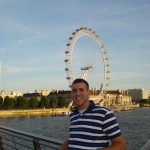
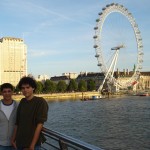
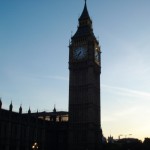
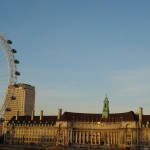


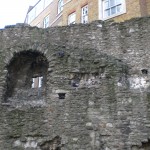
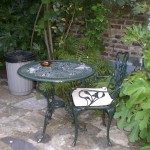
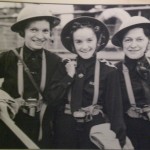



 (sorry it’s blurry, couldn’t use flash).
(sorry it’s blurry, couldn’t use flash).